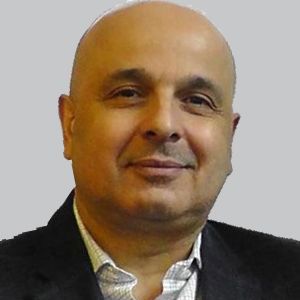Commentary
Video
Mechanism of Action of Investigational Agent NMD670 for SMA: Jorge Quiroz, MD, MBA
Author(s):
The chief medical officer of NMD Pharma shed light on a newly announced phase 2 study assessing NMD670, a neuromuscular transmission enhancer, for patients with spinal muscular atrophy. [WATCH TIME: 4 minutes]
WATCH TIME: 4 minutes
"We think that NMD 670, if therapeutically beneficial, could be utilized alone, or in combination therapy with previously approved medications. Because of the maximum faction, it will be efficacious by itself."
In recent years, the treatment landscape for patients with spinal muscular atrophy (SMA), a rare devastating neuromuscular disorder, has expanded, with 3 approved medications. Nusinersen (Spinraza; Biogen), an antisense oligonucleotide, was the first to be approved, followed by Zolgensma (Novartis), an adeno-associated virus (AAV9) vector agent, in 2019, and risdiplam (Evrysdi; Genentech), an SMN-enhancing therapy. Both nusinersen and risdiplam act as an SMN2 mRNA splicing modifier, while Zolgensma replaces SMN1 with a DNA episome. Despite these advances, some patients are still unresponsive to treatment and require additional care.
At the 2024 Muscular Dystrophy Association (MDA) Clinical and Scientific Conference, held March 3-6, in Orlando, Florida, NMD Pharma provided a status update on the enrollment of their phase 2 SYNAPSE-SMA study, a trial that assesses its investigational agent NMD670. The therapy is a first-in-class neuromuscular transmission enhancer that works through the selective inhibition of the skeletal muscle chloride channel (CIC-1). SYNAPSE-SMA will serve as a proof-of-concept, double-blind, placebo-controlled, 2-way crossover study to test the effects of NMD670 vs placebo in ambulatory adults with type 3 SMA.
The study will use change in 6-minute walk test as the primary outcome, with secondary end points that include safety and tolerability, muscle strength, motor function, fatigue, and neuromuscular transmission. During the meeting, NeurologyLive® caught up with Jorge Quiroz, MD, MBA, chief medical officer of NMD Pharma, to discuss the mechanism of action of NMD670, and what it can provide for patients with SMA. He spoke on the differences of this therapy compared with previously approved products, and whether there is potential to produce synergistic effects.
Click here for more coverage of MDA 2024.
REFERENCE
1. Kiyasova V Gronnebaek TT, Cornwall C, et al. Design and status update on the SYNAPSE-SMA phase 2 trial of NMD670 in ambulatory adults with spinal muscular atrophy type 3. Presented at: MDA Clinical and Scientific Conference; March 3-6, 2024; Orlando, FL. POSTER S114
Newsletter
Keep your finger on the pulse of neurology—subscribe to NeurologyLive for expert interviews, new data, and breakthrough treatment updates.




